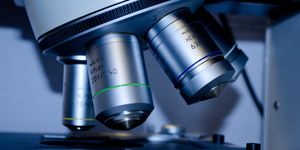Healing Bone Fractures
Studies on rats revealed that two existing drugs can boost repair machinery by triggering the release of bone marrow stem cells. Findings were published in the journal of Regenerative Medicine. These two drugs were used for bone marrow transplants and bladder control and now can be used for treating bone fractures.
Learn more about bone fractures:
The spongy region of bone houses bone marrow that can mobilize different types of stem cells during disease or injury. The research involves investigators not only from Imperial College of London but from Beaumont Health in the U.S.
In the study, researchers used drugs to trigger the bone marrow of healthy rats to release mesenchymal stem cells and help heal bone fractures.
"The body repairs itself all the time. We know that when bones break they will heal, and this requires the activation of stem cells in the bone. However, when the damage is severe, there are limits to what the body can do of its own accord. We hope that by using these existing medications to mobilise stem cells, as we were able to do in rats in our new study, we could potentially call up extra numbers of these stem cells, in order to boost our bodies own ability to mend itself and accelerate the repair process. Further down the line, our work could lead to new treatments to repair all types of bone fracture,” says the corresponding author, Professor Sara Rankin from the National Heart and Lung Institute at Imperial College London.
The two therapeutics used in the research were a CXCR4 antagonist for bone marrow transplants and a beta-3 adrenergic agonist for bladder control. The rats were administered a single treatment of the two drugs which led to calcium binding to the site of bone injury thus, speeding bone formation and healing. The investigators note that they did not analyze restoration of movement in bone, or repair to additional tissue such as nerves. In addition, one of the therapeutics used was found to trigger fat cells in the bone marrow to secrete endocannabinoids—believed to hold implications in mobilizing stem cells and thereby promoting healing.
"We first need to see if these medications release the stem cells in healthy volunteers before we can then test them in patients with fractures,” says Dr. Tariq Fellous, first author of the research from Imperial's National Heart and Lung Institute (NHLI). “We have the drugs and know they are safe to use in humans -- we just need the funding for the human trials."
Researchers believe that the data is good enough to move on to humans.
"Rather than devising new stem cell treatments from scratch that involve lengthy and expensive trials, our approach harnesses the power of the body's own stem cells, using existing drugs,” adds co-author, Dr. Andia Redpath. “We already know the treatments in our study are safe, it's now just a matter of exploring further if they help our bodies heal."
Source: Science Daily










